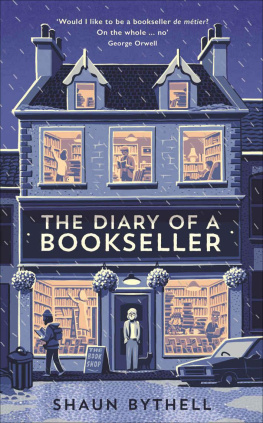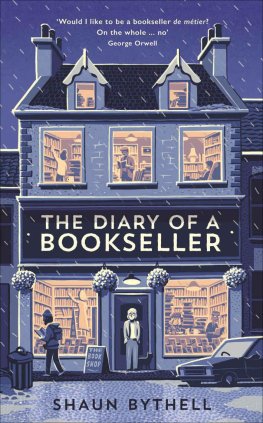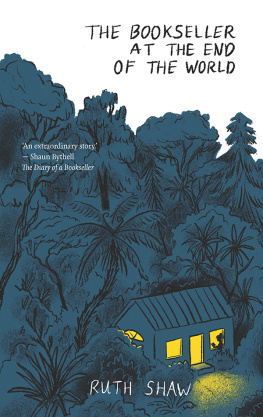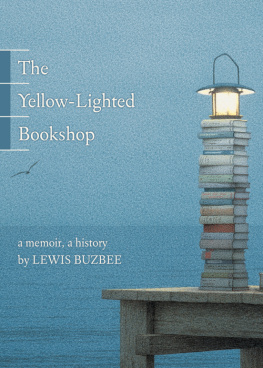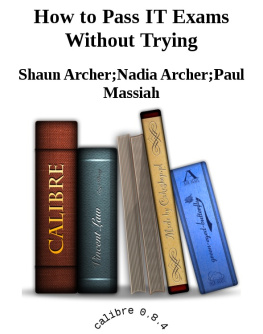REMAINDERS OF THE DAY
ALSO BY SHAUN BYTHELL
Seven Kinds of People You Find in Bookshops
Confessions of a Bookseller
The Diary of a Bookseller
REMAINDERS OF THE DAY
More Diaries from The Bookshop, Wigtown
SHAUN BYTHELL

First published in Great Britain in 2022 by
Profile Books Ltd
29 Cloth Fair
London
EC1A 7JQ
www.profilebooks.com
Copyright Shaun Bythell, 2022
10 9 8 7 6 5 4 3 2 1
Typeset in Granjon by MacGuru Ltd
The moral right of the author has been asserted.
All rights reserved. Without limiting the rights under copyright reserved above, no part of this publication may be reproduced, stored or introduced into a retrieval system, or transmitted, in any form or by any means (electronic, mechanical, photocopying, recording or otherwise), without the prior written permission of both the copyright owner and the publisher of this book.
A CIP catalogue record for this book is available from the British Library.
ISBN 978 1 80081 242 0
eISBN 978 1 80081 244 4
FEBRUARY
Booksellers are constantly giving their patrons extraordinary bargains. In London recently a copy of an early edition of Keats Poems, originally bought from a dealer for 2s was sold for 140, and a first edition of Burns Poems bought in Edinburgh for 1s 6d brought 350.
R. M. Williamson, Bits from an Old Bookshop (John Menzies, Edinburgh, 1904)
Williamson may well have been in a position to afford the luxury of giving his patrons extraordinary bargains. Not all of us are. In part, what he says remains true, though; provided you sell a book for more than youve paid for it, what happens to it after that is largely in the hands of fate. Buying and selling books prior to the advent of the internet was a matter of judgement based on experience and a pile of old auction catalogues and records. Now if anything out of the ordinary falls into my hands I tend to go straight online to see what other people are selling it for and base my price on that.
When I discovered Williamsons beautifully produced book in a box that Id bought from a house in Edinburgh in the embers of last year, I couldnt resist dipping into it straight away. My first instinct was that he was so generous about his customers, so passionate about his trade and so unfeasibly knowledgeable that he must have been a fictional creation, but last year a customer brought in a four-volume set of The Works of Robert Burns, calf-bound and published in 1823. Slipped between the endpapers of the first volume was a letter, in the original envelope, stamped and dated Saturday 9 February 1929. It was a handwritten response to an M. Maclean Esq., and in beautiful cursive handwriting it explained that In reply to you, I cant think that your friends edition of Burns is of high value. If, however, he is in any doubt he should write to Maggs Bros, Booksellers, London. Yours, R. M. Williamson. Williamsons astonishment that a Kilmarnock edition of Burns could have made 350 in the early twentieth century would doubtless have been surpassed had he known that a copy sold for 40,000 in 2012 through the Edinburgh saleroom Lyon & Turnbull.
Williamsons business no longer exists, but Maggs to whom he commended Mr Maclean for further advice is still a distinguished force in the world of rare and antiquarian bookselling; in 1932 they pulled off the booksellers dream of buying (from the recently Soviet Russia) a Gutenberg Bible and a Codex Sinaiticus, or Sinai Bible a handwritten copy of one of only four texts of a Christian Bible in ancient Greek, written in the fifth century. Sixteen years prior, though, and among their most famous and unlikely acquisitions, was the purchase of Napoleon Bonapartes penis, which they bought in 1916 from a source with highly credible provenance: direct descendants of Francesco Antommarchi, who conducted the autopsy on Napoleons body. He had been bribed (it appears) by the emperors chaplain to remove the member in a posthumous act of revenge for Napoleons repeated mockery of his chaplain for impotence. Im not entirely sure that its possible to emasculate a corpse.
Maggs sold the dismembered member to an American antiquarian bookseller in 1924 for 400. According to that most reliable of sources, Wikipedia: A documentary that aired on Channel 4, Dead Famous DNA, described it as very small and measured it to be 1.5 inches (3.8 cm). It is not known what size it was during Napoleons lifetime. The items current owner has allowed only ten people to see it, and has apparently been offered over $100,000 for it.
Shortly after I bought the shop in November 2001, a customer asked if I could help him sell a document which he claimed contained irrefutable evidence that Napoleon had been poisoned, and had not as history records died of stomach cancer while exiled in Saint Helena. There was a whiff of the mysterious, bordering on questionable, and possibly with a foot in the illegal, about how this man had come to be in possession of the document, so, following repeated requests from him for help in selling the letter, I made a series of unconvincing excuses explaining why I was unable to assist in the sale of something that he could very easily have consigned to an auction himself. This document must if it was genuine have been written by the same penectomist who removed Napoleons manhood. I have no idea what happened to the letter; it may well be languishing in a box somewhere, hopefully to be discovered in time like a lost Caravaggio or Leonardo and possibly to change our interpretation of history.
Such are the potential treasures that you invite into your bookshop when you throw open the doors every morning.
Not tonight, Josephine.
FRIDAY, 5 FEBRUARY
Online orders: 4
Books found: 4
At 9.45 a.m. a pink-haired woman appeared in the shop, strode through the front room and up the stairs, clearly for Petras belly-dancing class. Petra turned up ten minutes later, and the usual banging and thumping distracted the only customer to grace the shop all day. Petra for the uninitiated is an Austrian woman who is about my age (forty-six at the time of writing), with twin daughters, who decided to move to Galloway a few years ago. Shes charming, leans heavily towards conspiracy theories and is convinced that she can make a living in this impoverished corner of Scotland by teaching belly-dancing, which she does in the drawing room above my shop. Every Friday she turns up, convinced that crowds will appear, only to discover that one or possibly two people have either the time or the inclination to attend. It never dampens her spirit, though, and she keeps at it, week after week.
My father dropped in at 11 a.m. with the curtains for the bothy, which mother had shortened. The bothy is the old gardeners cottage behind the shop, which Ive turned back into a small house, recently occupied by my good friend Carol-Ann. My father was en route to a funeral: that of Michael Dunlop, a local farmer. I hadnt heard that hed died. As he was about to leave, Ben and Katie (who are taking over The Ploughman, the local pub) called in to discuss advertising in the Spring Festival programme. I introduced them to my father, who told them that hed heard about their enterprise and was looking forward to seeing what theyre doing to the place. He asked them what sort of food theyre going to have on the menu (my father is particularly old-fashioned in his tastes). Ben replied, Thirteen types of burger. To which my father replied: I dont like burgers. What will there be for me to eat? Ben, in his stereotypically French way, shrugged his shoulders and grunted. I suspect that this is not the last time hes going to have a conversation of this kind. Katie, Bens German partner, clearly saw a potentially lost customer and chipped in with, Well have chicken wings and other things for people who dont eat burgers, which vaguely seemed to appease my father.


